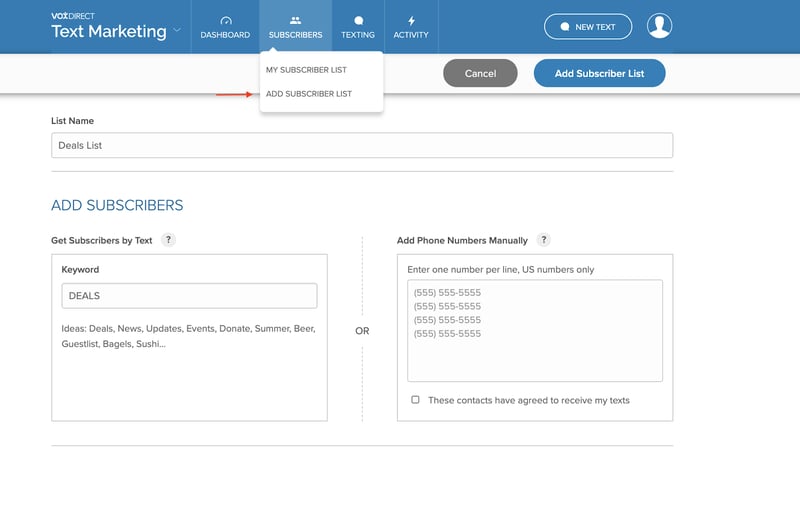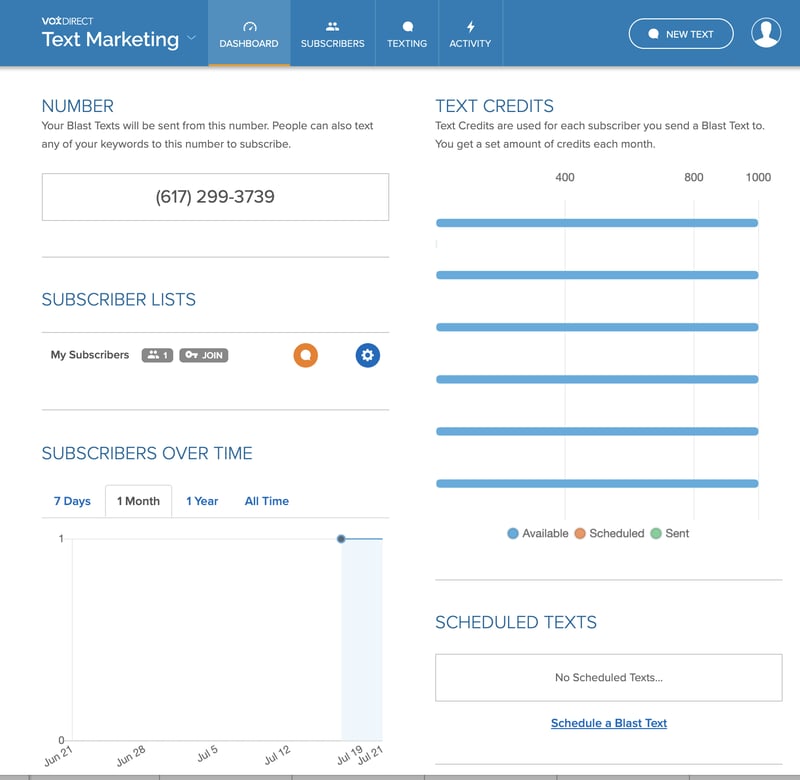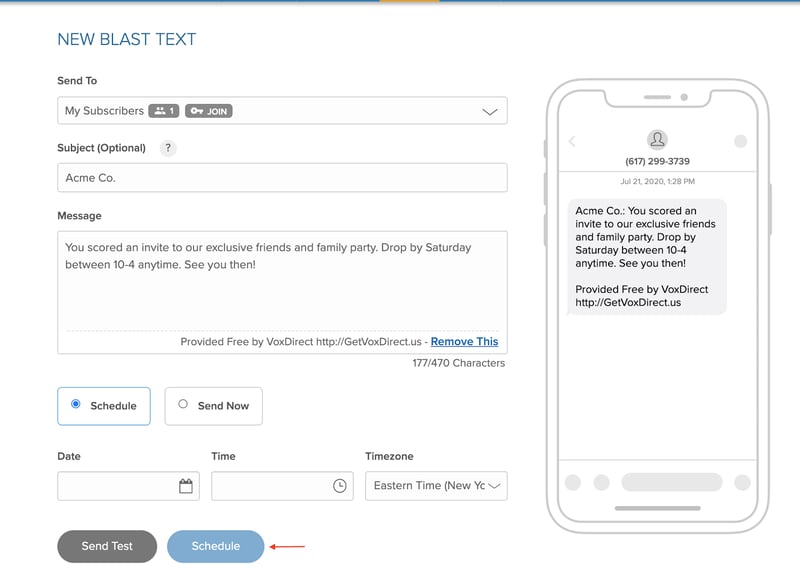
Want to make sure your offer gets opened by your target customers 98% of the time?
Looking for a rapid response to a short, sharp 160 character message? Need to share a voucher, coupon, or link to a piece of info that you just know your audience will want?
Then no doubt about it – you need a text (SMS) marketing campaign!
But with so much information still vying for your customers’ attention, you need to make sure your message gets noticed in the right way – by the right people, at the right time.
Continue reading below or watch the video to learn the 5 easy steps to help you set up a text marketing campaign.
5 Easy Steps to Set Up A Text Marketing Campaign
Step 1: Define Your Goals
As with any marketing campaign, successful execution relies on solid strategy. Before choosing your platform, cleaning your list, or even crafting your message, you need to know your goals – what you want to achieve with this specific campaign.
For example, you may want to generate sales to clear out some of last season’s stock; or offer a new customer discount, rewarding those who opt into your communications. Maybe it’s to make people aware of a new website.
Whatever your objective, there should only be one per message. That’s why both content and context count here (but we’ll get into those a little later).
Your campaign should be aligned with your wider marketing strategy, and should complement other channel efforts – such as content marketing, social media, email marketing.
Each channel has its own advantages – but for getting a message seen, opened, and to ensure an immediate response, SMS wins hands-down.
Step 2: Use List Segmentation
There’s a big difference between customers and prospects. Knowing precisely who you’re targeting is critical. The context of your message counts.
Consider: do those you’re sending to have an existing relationship with your brand? If so, for how long? Is their account active? Dormant? Have they even bought from you yet? Do you need to incentivize them?
With VoxDirect, you can create lists using custom keywords.
For example, if a customer texts “DEALS” to the business number, they will automatically be added to the list you see in the image below:

However, it’s also very important to make sure that everyone you’re sending to has opted-in to receive your messages. You need someone’s expressed permission to use their data for marketing purposes before adding them to the ‘send’ list.
Not doing so could lead to more than just complaints or ‘unsubscribe’ replies. It could lead to a breach of data protection laws.
Step 3: Choose The Right Platform
Choosing the right messaging tool is vital. The easier, and more intuitive the platform, the simpler the task becomes. It all depends on the scale of your list, the functionality your business needs, and how frequently you plan to run campaigns.
For example, with Vox Direct, users can send SMS campaigns to an unlimited number of customers or prospects via a cloud-based, easy to use, text marketing platform:

Not only that, but users can receive replies, make voice calls, and even set up a voicemail message using the same phone number – a business number which they can access via any device via a dedicated app or desktop dashboard.
They can also use a ‘set and forget’ campaign tool that enables them to create messages in advance and automatically action them on a specific date:

Step 4: Create Attention Grabbing Messages
You’ve heard the term ‘small but mighty’? That’s why SMS messages deliver.
Crafting a powerful message doesn’t mean using fancy words. Neither does it involve giving in-depth explanations. A powerful message is to-the-point. It’s easy to understand. It incites people to action.
Or least it should – especially if you know who you’re targeting and what you want them to do. However, increasing your chances of a response – or better still, a sale – still relies on hitting the right notes. But with just 160 characters to do that with, each message needs to pack some serious punch.
Start with personalization – using the recipient’s name will get their attention. It tells them directly this message is for them and no-one else.
A sense of urgency is also a good tactic for getting your message noticed. For example, a discount available for ‘a limited time’ or ‘while stocks last’ can incentivize customers to click.
Also, given the nature of the medium itself, SMS messages shouldn’t be too formal. There isn’t room. And considering you have limited space, legible abbreviations (such as ‘info’ instead of ‘information’ are perfectly acceptable too.
A call to action is something every message needs to include. Whether it’s “Text ‘OFFER’ to 7989” or “Visit our website’, giving recipients a clear understanding of what you want them to do next (and some direction on how to do it) is probably the most important part of each SMS message.
Step 5: Time & Test Messages Appropriately
Your recipients might have opted in to your SMS blasts – but you don’t want to annoy or irritate them! Not only will that overwhelm them you also run the risk of them becoming immune to your messages. So making sure you get the frequency right is crucial.
Secondly, you need to make sure you send your messages at the right time of day. For example, a food discount voucher would be best sent around mealtimes; or an online retail discount would work best in the evenings – when people have more time to shop, for example. Remember, SMS is great for prompting immediate action.
With Vox Direct, it’s incredibly easy to schedule your texts to go out at the exact time you’d like:
However, getting things right is a continuous process – which is why it’s important to test different messages; send them at different times; measure engagement, click-thrus, and open-rates; and review outcomes.
This means having an SMS management system that gives you all of the insights you need to do everything from A/B split testing to tracking via Google Analytics.
Conclusion
All things considered, while a single SMS blast might yield an immediate response, like any other channel, the long term success of text messaging relies on a consistent approach – as part of a broader marketing strategy.
There’s a lot involved in getting that right – which is why working with a tech provider who can offer guidance, best practice, and all of the functionality needed to create and deploy successful SMS campaigns is a good place to start.
VoxDirect helps businesses stay connected with unlimited texting capabilities, click-worthy campaigns, and cutting-edge personalization tools.



Comments
Currently, there are no comments. Be the first to post one!